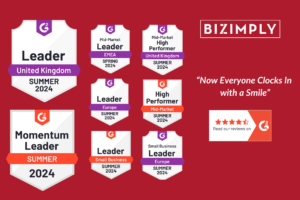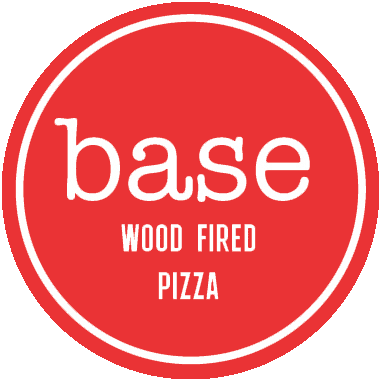Managing the increasingly stringent demands of the hospitality industry can be challenging, and often overwhelming, specifically in the context of scheduling and shift management.
Whether finding adequate coverage during busy times or handling unexpected changes, scheduling can easily become the worst part of your job.
Luckily, scheduling software offers a practical solution, simplifying the process while boosting your overall efficiency and communication throughout the entire operation. Today, hospitality tech is an incredibly important part of business operations.
The best scheduling software for restaurants and hotels lets you eliminate the stress of organising shifts by automating the process and decreasing the chance of errors.
Why Hospitality Scheduling Software is Key
Now, let’s cover the main reasons that restaurant and hotel owners and managers turn to scheduling software to help maintain smooth operations.
Improved Workforce Management
Scheduling software transforms workforce management from a stressful juggling act into a streamlined, efficient process. In the hospitality industry, where the pace is fast and the stakes are high, having the right staff in the right place at the right time is crucial.
Traditional Challenges
Traditionally, managers spent hours sifting through spreadsheets, manually tracking employee availability, and trying to balance everyone’s needs while ensuring all shifts were covered.
This often led to mistakes, overstaffing, understaffing, and significant frustration for both managers and employees. Trying to do everything manually is next to impossible these days, as the pace of the hospitality industry moves far too quickly.
Improved Productivity & Morale
Probably the most appealing aspect of the platforms – scheduling software automates much of the scheduling process, allowing managers to quickly see who’s available, who’s already been scheduled, and where there might be gaps.
The software takes into account employee preferences, availability, and skill levels, ensuring that the best-suited staff are assigned to each shift. As such, employees are more likely to work shifts that fit their lives and strengths, improving overall morale.
A happy workplace is a productive workplace, and helping your employees find balance can be very beneficial for your restaurant or hotel.
Seamless Communication
In an industry where clear and timely communication is key, scheduling software provides a seamless way for managers and employees to stay connected and informed.
Centralised Communication Platform
With a centralised communication platform, the day-to-day operations of your restaurant or hotel are likely to run smoothly with everyone on the same page.
- Eliminating Outdated Methods: Gone are the days of relying on sticky notes, bulletin boards, or lengthy email threads to keep everyone on the same page.
- Unified Platform: With scheduling software, all communication related to shifts, availability, and changes happens in one centralised platform, making it easier for everyone to stay in the loop.
Real-Time Updates
When managers make adjustments to the schedule—whether it’s adding a shift, changing an employee’s start time, or dealing with a last-minute call-out—these updates are instantly reflected in the system.
Employees receive notifications directly on their mobile devices, keeping everyone aware of any last-minute changes or issues that may have occurred.
Built-In Communication Tools
These built-in communication tools are hugely advantageous to restaurants and hotels with benefits including:
- Direct Communication: Scheduling software often includes built-in tools that allow managers and employees to communicate directly through the platform.
- Simplified Requests: Employees can request time off, swap shifts, or clarify scheduling concerns without needing to track down a manager in person or wait for an email reply.
- Efficient Management: Managers can quickly approve or deny requests, send reminders, and address any issues as they arise, helping to make sure that everyone’s needs are promptly considered.
- Empowering Employees: The software fosters a more collaborative work environment by allowing employees to communicate directly with one another about shift swaps or covering shifts.
- Manager Oversight: While employees take ownership of their schedules, managers remain in the loop, ensuring smooth operations.
Scheduling software streamlines and improves communication within a hospitality business. When everyone’s on the same page, everything runs smoothly.
Labour Law Compliance
Scheduling software also plays a critical role in reducing labour disputes by providing transparency and easy access to records of hours worked and schedules assigned. For restaurants and hotels, having a reliable system in place is necessary for maintaining a positive and cultured work environment.
Single Source of Truth
Scheduling software creates a single source of truth for all scheduling data. Employees can view their schedules in real-time, see upcoming shifts, and track any changes made by managers.
This transparency helps prevent misunderstandings about shift times and responsibilities, as everyone has access to the same information. When employees have clear visibility into their schedules and any updates, disputes over shift assignments are significantly reduced.
Managing Shift Requests and Changes
Scheduling software often includes features that allow employees to request time off, swap shifts, or trade hours with coworkers directly through the platform.
These requests are tracked and managed in real time, with all changes documented within the system. This reduces the potential for conflicts or misunderstandings about who is working and when.
Managers can review and approve these requests transparently, making sure that all parties are aware of and agree to the adjustments.
Addressing Pay Discrepancies
The scheduling software accurately tracks and records hours worked, automatically calculating regular time, overtime, and any adjustments for breaks or absences.
This detailed record maintains accurate payment processes according to employees’ scheduled hours, reducing the likelihood of disputes over pay.
In the event of a discrepancy, both employees and managers can easily access historical data to review and resolve issues quickly.
Full Compliance at All Times
The software often includes features for tracking compliance with your local labour laws, such as break requirements and maximum shift lengths.
By ensuring that all shifts and hours adhere to legal regulations, the software helps prevent disputes related to labour law violations.
Employees can feel more secure knowing that their rights are being upheld and that scheduling decisions are made with compliance in mind.
Fostering a Transparent and Fair Work Environment
Scheduling software also helps to create and maintain a transparent and fair workplace, an essential part of good business. A few ways in which it does this is:
- Reducing Ambiguity: Scheduling software fosters an honest work environment by keeping all scheduling and pay information readily accessible and accurate.
- Preventing Conflicts: By reducing ambiguity and providing clear documentation, the software helps prevent conflicts and misunderstandings.
- Improving Operations: This transparency and accuracy lead to smoother operations and a more satisfied workforce, contributing to a more efficient and well-managed business.
Boosted Employee Satisfaction
Of course, scheduling software can significantly improve employee satisfaction by providing a more flexible, transparent, and fair working environment. Let’s go over a few of the ways this software can contribute to a happier, more motivated workforce:
Flexibility and Work-Life Balance
Good shift management software can do wonders for your employee’s satisfaction with benefits including:
- Customised Schedules: Scheduling software allows employees to input their availability and preferences, ensuring that they are scheduled for shifts that fit their personal lives and commitments.
- Easier Shift Swaps: Employees can easily swap shifts with coworkers through the platform, giving them more control over their work-life balance without the need for lengthy approval processes.
- Time-Off Requests: The software simplifies the process of requesting time off, allowing employees to plan their lives with greater certainty and ease.
- Equitable Shift Distribution: The software helps ensure that shifts are distributed fairly among staff, reducing perceptions of bias or favouritism.
- Consistent Application of Rules: By automating scheduling, the software ensures that rules and policies are applied consistently, which creates and upholds a sense of fairness and trust among employees.
- Compliance with Labour Laws: The software’s ability to track compliance with labour laws, such as proper break times and avoiding excessive hours, contributes to a healthier and more respectful work environment.
Recognition and Reward
Some scheduling software includes features that track performance and attendance, allowing managers to recognise and reward reliable employees.
By understanding employee preferences and strengths, managers can assign shifts that align with career goals, contributing to job satisfaction and growth opportunities.
The transparency, flexibility, and fairness provided by scheduling software lead to higher morale and job satisfaction. With a more predictable and manageable schedule, employees experience less stress and are more likely to feel valued and supported in their roles.
Satisfied employees are more engaged and committed to their work, leading to better performance and a more positive work environment overall.
Less Human Error
Scheduling software plays a vital role in minimising human error in workforce management, leading to more accurate, efficient, and reliable operations.
Automation of Complex Tasks
- Eliminating Manual Entry: By automating the scheduling process, the software removes the need for manual data entry, which is often prone to mistakes. This ensures that shifts are assigned correctly, reducing the likelihood of errors.
- Automatic Calculations: The software automatically calculates total hours worked, overtime, and break times, reducing the risk of miscalculations that can occur when done manually.
- Consistent Rule Application: Scheduling software consistently applies rules regarding shift lengths, breaks, and overtime, ensuring compliance without the risk of human oversight.
Enhanced Communication and Clarity
- Clear Communication Channels: By centralising communication within the scheduling software, misunderstandings that can lead to errors are greatly reduced. Employees and managers are always on the same page.
- Direct Access for Employees: Employees can view and confirm their schedules directly through the platform, which reduces the chance of errors stemming from missed messages or unclear instructions.
Improved Record Keeping
- Accurate Time Tracking: The software keeps an accurate record of hours worked, shift changes, and requests, reducing the likelihood of errors in payroll or compliance reporting.
- Audit Trails: Every action taken within the software is logged, creating a clear audit trail that can be reviewed if discrepancies arise, making it easier to identify and correct errors.
Data-Driven Decisions
Scheduling software also empowers managers to make more informed, data-driven decisions by providing valuable insights and analytics. With the right software, the data provided can lead to huge improvements in your organisation.
Access to Real-Time Data
Managers get real-time access to data on employee availability, shift patterns, and staffing levels, allowing managers to make decisions based on the most current information.
With real-time data, managers can quickly adjust schedules in response to unexpected changes, such as a surge in customer demand or an employee absence, ensuring that staffing levels remain optimal.
Historical Data Analysis
The software tracks and stores historical data on workforce performance, allowing managers to identify trends, such as peak hours, frequent overtime, and staffing bottlenecks.
By analysing past data, managers can forecast future staffing needs more accurately, ensuring that they are better prepared to meet demand without overstaffing or understaffing.
Optimising Workforce Efficiency
Scheduling software can also provide insights into how different shifts perform, helping managers determine the most efficient staffing levels for each period. The software can track employee skills and performance, enabling managers to assign the most qualified staff to specific shifts, improving service quality and operational efficiency.
By analysing data on hours worked, overtime, and peak periods, managers can make decisions that help optimise labour costs, balancing staffing needs with budget constraints.
Enhanced Decision-Making Tools
Many scheduling software solutions offer customisable reports that allow managers to focus on specific metrics, such as attendance rates, shift coverage, or compliance with labour laws.
These reports give managers the tools to make data-driven adjustments to schedules – future decisions are then based on objective insights rather than guesswork or intuition.
Increased Flexibility
A robust scheduling solution also improves the flexibility of workforce management, allowing businesses to adapt more quickly and efficiently to changing circumstances.
Flexible Scheduling Options
- Customisable Shifts: Scheduling software allows managers to create custom shifts that align with specific business needs, whether it’s adjusting for peak times, accommodating special events, or responding to unexpected changes in demand.
- Adaptive Scheduling: The software enables managers to quickly modify schedules based on real-time data, ensuring that staffing levels are always aligned with the current situation, such as a sudden surge in customer volume or last-minute staff availability changes.
On-Demand Adjustments
- Real-Time Updates: Scheduling software provides real-time updates to both managers and employees, allowing for immediate adjustments when needed, such as handling a call-out or extending hours during busy periods.
- Instant Notifications: Employees receive instant notifications of any changes to their schedules, ensuring they are always informed and able to respond quickly.
Improving Operational Agility
- Responsive Management: Managers can respond more effectively to changes in business conditions, such as unexpected customer demands or changes in employee availability, by quickly adjusting schedules through the software.
- Dynamic Staffing: The software allows for dynamic staffing adjustments, such as bringing in additional staff during peak times or reducing hours during slower periods, ensuring optimal resource allocation.
Better Customer Service
The power of scheduling software when it comes to customer service should also not be understated. With the right staff are available at the right times, customers are far more likely to have an enjoyable experience.
Optimal Staffing Levels
The software helps managers maintain optimal staffing levels, ensuring that there are always enough employees available to meet customer demand, especially during peak times.
Just by examining historical data and real-time information, the software helps avoid both overstaffing and understaffing, which can lead to either unnecessary labour costs or poor service due to overwhelmed staff.
Matching Skills to Demand
Scheduling software also allows managers to assign employees to shifts based on their skills and experience, ensuring that the most qualified staff are in place to handle specific tasks or high-demand situations.
By matching the right employees to the right shifts, the software helps maintain high-quality service from knowledgeable and capable staff members.
Consistency Across Locations
For businesses with multiple locations, scheduling software ensures that service levels are consistent across all sites by maintaining uniform staffing standards and practices.
Managers can quickly and easily coordinate staffing across locations, ensuring that each site has the necessary staff to provide excellent customer service, regardless of location-specific demands.
Improved Employee Retention
Scheduling software contributes to higher employee satisfaction by providing more predictable and fair schedules. Satisfied employees are less likely to leave, reducing turnover costs associated with hiring and training new staff.
By allowing employees to manage their schedules more effectively, the software can reduce absenteeism, leading to fewer disruptions and lower costs related to temporary staff or last-minute replacements.
Scalability
As your restaurant or hotel business grows, managing an expanding workforce becomes increasingly complex. Scheduling software provides the scalability needed to handle this growth seamlessly. The benefits in the context of scaling can be summed up as follows:
Simplified Multi-Location Management
- Centralised Control: Scheduling software allows businesses with multiple locations to manage schedules from a central platform, ensuring consistent practices across all sites.
- Uniform Policies: The software enables the application of uniform scheduling policies and standards across different locations, maintaining consistency and quality as the business expands.
Efficient Workforce Management
- Handling Increased Workforce Size: As businesses grow, the software easily scales to accommodate an increasing number of employees, simplifying the scheduling process regardless of team size.
- Automated Scheduling: The automation features of scheduling software reduce the complexity of managing a larger workforce, allowing managers to create and adjust schedules quickly as the business scales.
Data-Driven Scaling Decisions
- Analysing Growth Patterns: Scheduling software provides insights into staffing needs, helping managers identify trends and make informed decisions about when and where to expand.
- Optimising Resource Allocation: The software’s data-driven approach ensures that resources are allocated efficiently, supporting sustainable growth by aligning staffing levels with business needs.
Flexible Infrastructure
- Cloud-Based: Many scheduling software platforms are cloud-based, providing the flexibility needed to scale operations without the need for significant infrastructure investment.
- Cost-Effective: The software often offers scalable subscription models, allowing businesses to pay for only what they need as they grow, making it cost-effective to expand.
What Bizimply Offers
Bizimply is a comprehensive workforce management platform tailored for hospitality businesses looking to boost efficiency.
Our platform offers a range of tools to streamline employee management, including scheduling, time and attendance tracking, and HR management. With Bizimply, you can create and manage staff schedules more efficiently, track working hours accurately, and maintain compliance with labour laws, all within a single platform.
Beyond scheduling and attendance, Bizimply also supports various HR functions, such as employee onboarding, performance management, and seamless payroll integration.
This makes it an all-in-one solution for optimising workforce operations, helping businesses improve efficiency, reduce administrative burdens, and enhance overall employee satisfaction.
Our main features include:
Embed: https://www.youtube.com/watch?v=K7He-aXm9Rw
Final Thoughts
In today’s fast-paced hospitality industry, where customer satisfaction and operational efficiency are paramount, adopting scheduling software is no longer just an option—it’s a necessity.
The benefits extend far beyond mere timekeeping, offering a powerful tool to streamline operations, boost employee engagement, and ultimately enhance the guest experience.
By implementing scheduling software, restaurants and hotels can stay ahead of the competition, reduce costs, and ensure compliance with labour laws, all while fostering a more organised and harmonious workplace.
As the demands of the industry continue to evolve, so too must the tools we use to manage them. Scheduling software is the key to unlocking a more efficient, productive, and successful business.
At Bizimply, we offer powerful shift management and scheduling software for hospitality businesses looking to boost productivity and ultimately increase profits.









